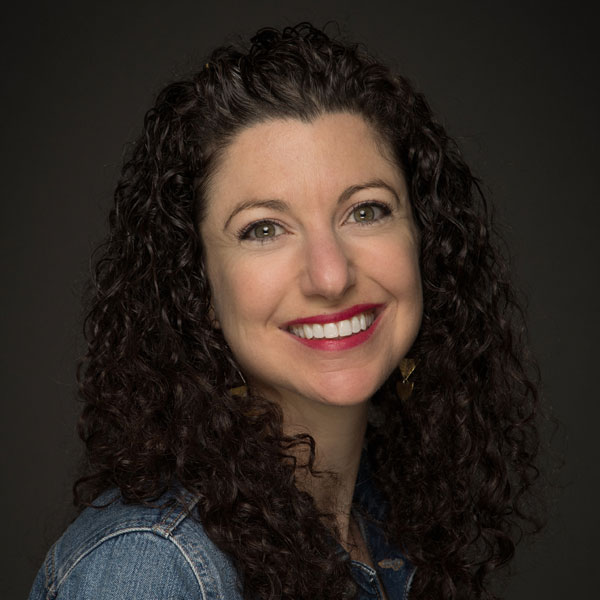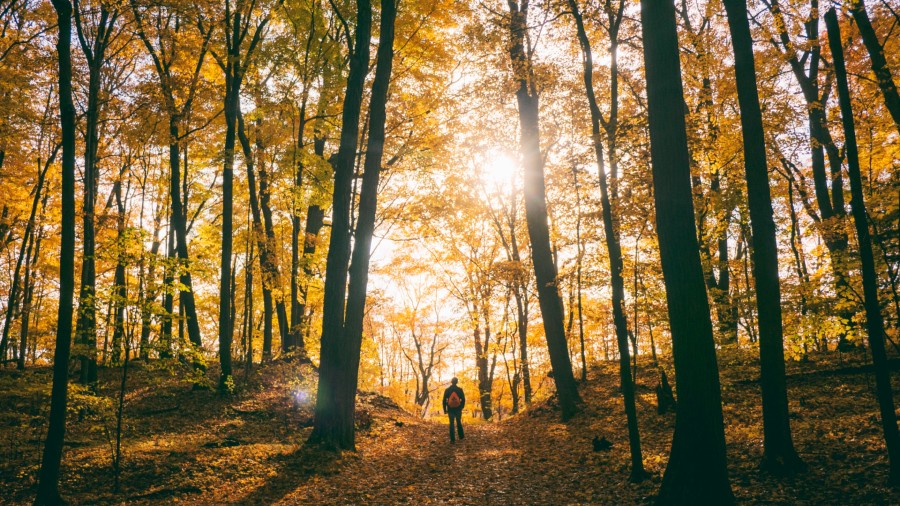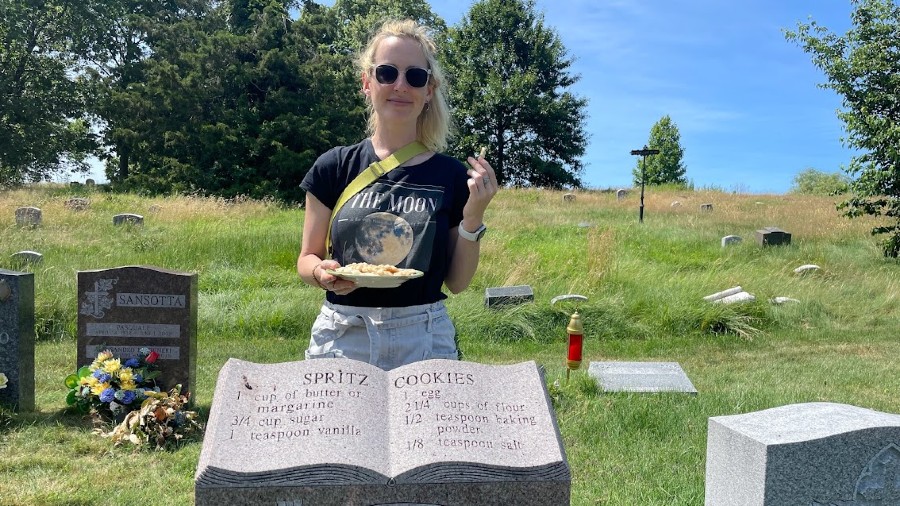Forest Bathing: a hiking alternative that connects you with nature
Mar 29, 2018, 5:19 PM | Updated: Mar 30, 2018, 8:06 am

Cascade forest Therapy founder Michael Stein-Ross preparing the tea ceremony. Freshly foraged cedar buds are steeping in his thermos. (Photo by Rachel Belle)
(Photo by Rachel Belle)
I’m standing in a wooded area of Seattle’s Discovery Park. The sun is shining, the sky is blue, my eyes are closed. I’m with Michael Stein-Ross, a certified forest therapy guide, who is leading me through a sort of meditation by asking me to become aware of each of my senses. This is my first time forest bathing.
RELATED: What happened when Ron tried to bathe in the forest
“It comes from the Japanese term shinrin-yoku which translates loosely as forest bathing,” Stein-Ross said. “It’s basically taking in the forest through all of your senses. We call it forest therapy in the Association [of Nature and Forest Therapy] because it’s a wellness practice. The forest is a therapist and the guide, we’re there to help you reconnect and communicate with the forest.”
He says forest bathing is different than hiking.
“When we go on a hike you usually have a destination in mind, watching the trail and trying to get to a waterfall, get to a lake, get to a point of interest,” he said. “In forest bathing there is no destination. The point is to just be. So we won’t cover more than a mile of trail, usually, in a forest bathing session. We’ll stop when we need to stop and wander about. It’s okay to go off trail. The birds are chirping, just stop and take that in.”
Stein-Ross founded Cascadia Forest Therapy. Outings always start with “Pleasures of Presence.” It’s that meditation I described at the beginning of this article. From there, he offers different invitations.
“One invitation that I like to do is called ‘camera,'” he said. “We’re walking down the trail and I say, ‘Stop.’ I’ll have you close your eyes and I will lead you carefully to this interesting element of this tree that I see. But you don’t see it yet. I’ll position you and have you take a breath and open your eyes. That’s a camera shot for you of the forest. You take that in and we can talk about it if we like. Then we’ll trade positions and you will then take me to a spot that you see as particularly interesting or calling to you.”
Forest bathing
One of the goals of forest bathing is to drop into liminal space.
“Liminal space, it’s that space when you lose track of time and you’re so into something,” he said. “Artists get it all the time and runners get it all the time. The role of the guide is to help the participants drop into that space of liminality. Because it’s in that space that we can more fully communicate and understand the information that the natural world has for us.”
I found the experience to be intensely relaxing. When I hike I move pretty fast, and often lament that I’m missing out on seeing the beauty around me because I need to look down at the trail so I don’t trip over a rock or miss a step. This is a completely different experience. It’s like a walking meditation. Stein-Ross says there is science behind its health benefits.
“To reduce stress and to increase your immune system and to increase creativity and productivity in the work place,” he said. “Time spent in nature is invaluable. It just takes a little bit, fifteen minutes a day. A nature therapy walk may be three hours and those results can last a month or two.”
At the end of every three hour experience, Stein-Ross concludes with a tea ceremony. He thoughtfully and carefully forages something in season, like nettles or new growth on a cedar, steeps it in his thermos and pours everyone a taste into tiny tea cups.
Stein-Ross is a certified massage therapist. He’s also certified in permaculture design, and he’s worked as a teacher for 12 years.
“I realized that this is a practice that brings all three of those things together at once; healing the earth, healing people and healing relationships.”













